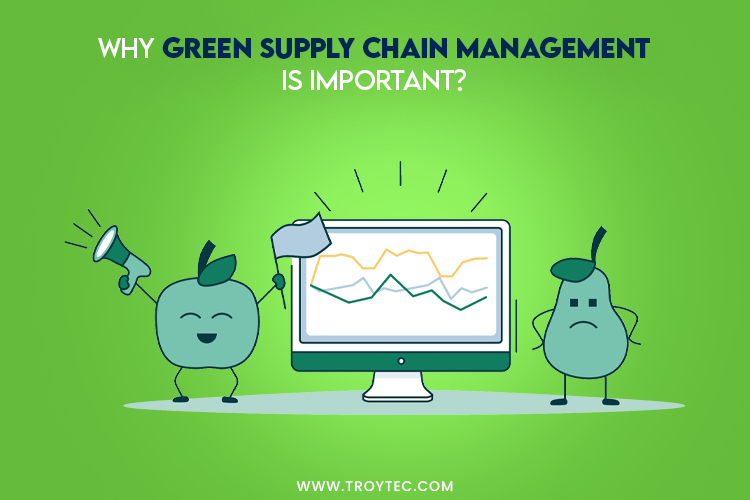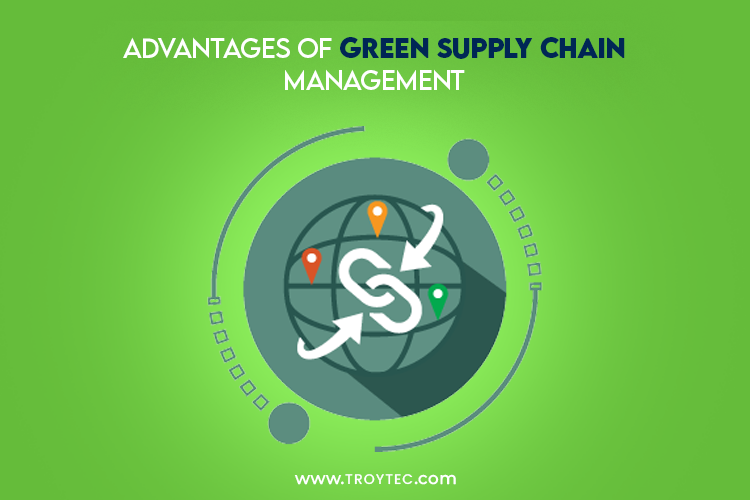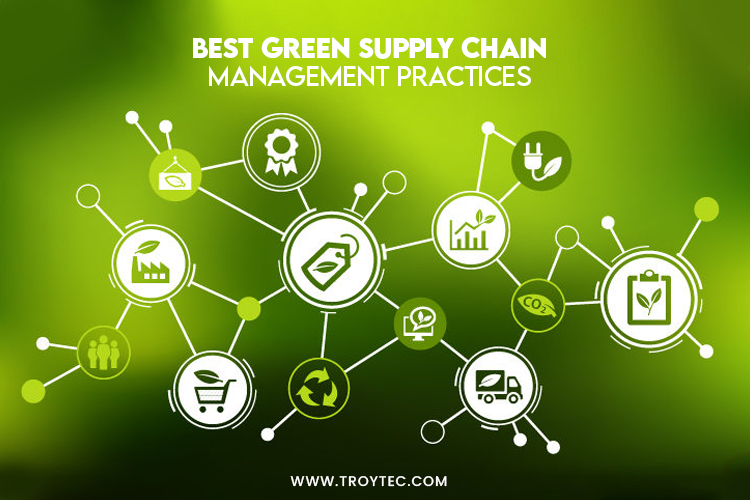What is The Best Green Supply Chain Management Practices?
The term sustainable and green supply chain management refers to the notion of incorporating environmentally sustainable procedures into traditional supply chains. Processes such as strategic sourcing and material procurement, product design, product production and assembly, distribution, and end-of-life managerial staff can all be included. Green supply chain operations involve additional value and value creation rather than mitigating the negative impact of the company’s supply chain operations.
The primary goal of green supply chain management is undisputedly to reduce air, water, and waste pollution. Still, green operations also improve firm performance in less waste manufacturing, item reuse and recycling, cost savings, increased asset efficiency, positive image construction, and increased customer satisfaction.
Keep reading the article to learn about green supply chain management, and we will discuss the best green supply chain management practices.
What is Green Supply Chain Management?
Green supply chain management or GSCM entails integrating sustainable environmental procedures into traditional supply chains — from production to operations to edge management — while adhering to the 4R1D concept (reduce, recycle, reclaim, reuse, and degradable).
The goal of sustainable supply chains is to reduce the environmental impact of factors such as pollution, deforestation, ozone layer depletion, and the greenhouse effect. Intelligent packaging remedies include using right-sized packaging, avoiding overly large boxes for smaller shipments, and using recyclable pads instead of plastic packaging.
Another significant revolution gradually taking shape is using an electronics fleet instead of fossil-fuel-based ships to reduce carbon emissions. On the other hand, EVs can provide improved results in terms of upkeep and range per charge.
Why is Green Supply Chain Management Important?

Making environmentally responsible practices a part of supply chain management is both moral and profitable. More sustainable procurement is also a less wastage supply chain, and waste minimization can reduce a company’s total cost of business – TCOB while also improving the industry’s reputation. This is just one of several purposes why green supply chain management is essential.
Here are the three main reasons you can know why green supply chain management is vital in businesses:
Reduced Waste: Thousands of tons of food are squandered in the supply chain annually. Managers can avoid costly losses that decrease their TCOB by attempting to decrease waste through improved system planning and adopting lean policies.
Lower Transportation Cost: When attempting to reduce greenhouse gas emissions, firms generally try to reduce the weight of consignments and make trips shorter. This reduces transportation costs because trips use less energy, and trucks have less wear and tear.
Enhanced Reputation: Eighty-one percent of global customers believe companies must help improve the environment. This belief influences purchasing decisions and can harm businesses that do not adopt sustainable practices. It also affects sometimes businesses that don’t sell directly to customers as businesses seeking to minimize their environmental impact would then look into their resellers’ policies on corporate sustainability.
Green supply chain management provides far more economic advantages than its title suggests, as managers benefit from higher productivity and lower bottom-line costs. Green policy implementation does not have to be a difficult task.
Advantages of Green Supply Chain Management
Here are some advantages of green supply chain management.

Cost Reduction
Companies can save revenue by incorporating online technologies that aid in greening their operations. IT solutions that reduce power consumption, energy substitution, and recycling can positively impact a company’s financial statements. Businesses implementing green measures focus on cutting emissions, leading to short rides and fewer shipments. This reduces costs because vehicles use very little fuel and have less wear and tear. For example, Nike changed how it produced its new version of shoes, potentially reducing costs by up to 51% and content usage by 20%, resulting in 0.25% better revenues.
Sustainability of Resources
If a company has implemented green practices in its supply chain, there must be a process or strategy that allows it to reproduce and recycle its goods at the same rate it is ingested.
Being Complaint
Based on the second consecutive Carbon disclosure project Supply Chain Report, which summed up climate change data from 710 suppliers, 6% of top companies already reject suppliers who do not manage carbon. According to current predictions, this figure will rise to 56% in the coming years. Businesses are finding reasons to go green, whether to comply with federal regulations or to meet the expectations of their customers or clients.
Reducing List Due to Digital Transformation
You’ve probably heard countless stories about how a risky product got through the cracks and into the supply chain. This is detrimental not only to an employee but also to the business as a whole. Such incidents are improbable when digital security solutions that as much are in place. Such solutions protect businesses from excessive partners and document and track all labor and goods from origin to destination.
Best Green Supply Chain Management Practices

Here are the 6 best green supply chain management practices you must know about:
1. Green Purchasing
Green purchasing, or sourcing environmentally sustainable goods and services, is as essential as developing green processes. After all, sustainable material procurement is the foundation upon which the remaining of your supply chain is built. Seeking recycled or reconditioned materials is the path to go for some brands. Others will need to source sustainably sourced raw materials from suppliers who protect wildlife habitats, such as timbers.
2. Green Manufacturing
Green manufacturing, among other things, focuses on using fewer unrenewable resources, lowering pollution and waste, and limiting emissions. The most important aspect of going green at this stage is reducing energy consumption. Everything from powering hardware and lighting to keeping your production plant warm or cool requires a lot of energy.
3. Green Packaging
Green packaging takes into account all stages of a product’s life cycle. This includes anything from your supplier’s material sourcing to how consumers discard the packaging. Using post-consumer recycled cartons and storage containers is an excellent place to start. There are numerous types of recycled paper and corrugated paper filler on the market. Biodegradable packaging design is another option. This material, made of everything from wheat to mushrooms, will quickly decompose in consumers’ gardens—or, if necessary, in a landfill.
4. Green Warehousing
Green Warehousing aims to make storage facilities more productive by reducing waste and energy consumption. One major challenge would be that warehouses quickly become obsolete. According to Logistics Management, approximately 11% of US storage facilities are over fifty years old, with only 4% having construction dates more notable than 2008. Older storage facilities are less energy efficient, resulting in higher CO2 emissions.
5. Green Transportation
According to the EPA, transportation was responsible for 28.2 percent of emissions of greenhouse gases in 2018—more than any other source. Indeed, there are ways of making transport more environmentally friendly, such as consolidating goods to reduce the number of air freight consignments or truck trips. You can also buy diesel engines or trucks using alternative energy sources. These options have substantially improved in recent years, making them a viable option even for longer distances. Don’t forget about rail transportation, which is both efficient and environmentally friendly.
6. Life-Cycle Management
Green design work always considers the item’s entire life cycle. Assume you create backyard playgrounds for children. If the material is strong enough, your customer may be able to pass on the play areas to another child once the first child has outgrown it. Suppose the playground is made of recycled waste, such as wood. After decommissioning the original product, those materials can have a 2nd (third, and fourth) life as patio furniture, paper, or leaf litter.
Conclusion
With the benefits listed above, including increased efficiency and cost savings, green supply chains will become a requirement for business sustainability over the long run. By obtaining from the analysis of green supply chain management technologies, your company can also transform its supply chain into green. Comment down your queries (if any) about green supply chain management and get your answers from our expert team accordingly!

